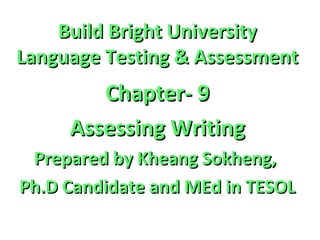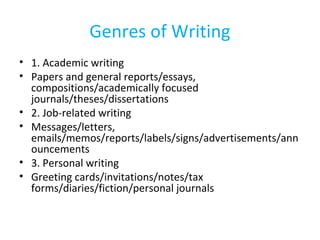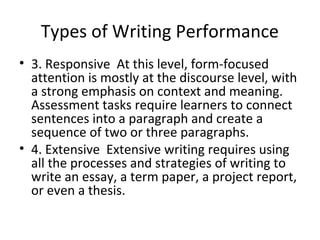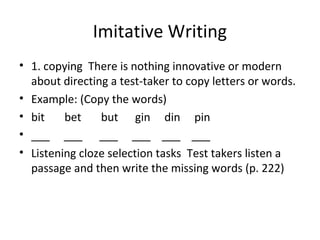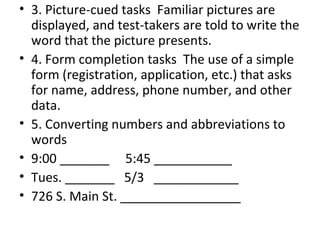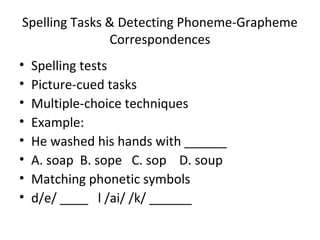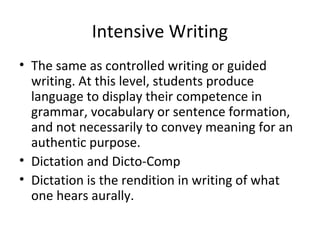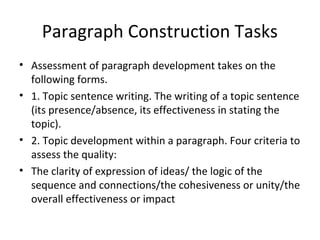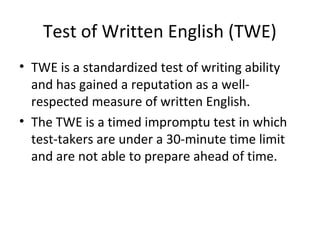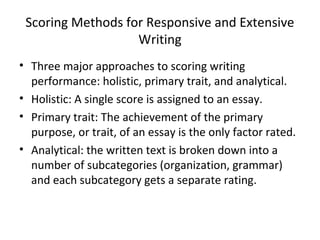This document discusses various methods for assessing writing performance, from imitative to extensive writing. It outlines genres of writing, types of writing performance, and examples of tasks used to assess skills at different levels. These include spelling tasks, picture-cued tasks, grammatical transformation tasks, paragraph construction, and holistic, primary trait, and analytical scoring methods. Scoring writing requires evaluating content, organization, vocabulary, syntax and mechanics.
